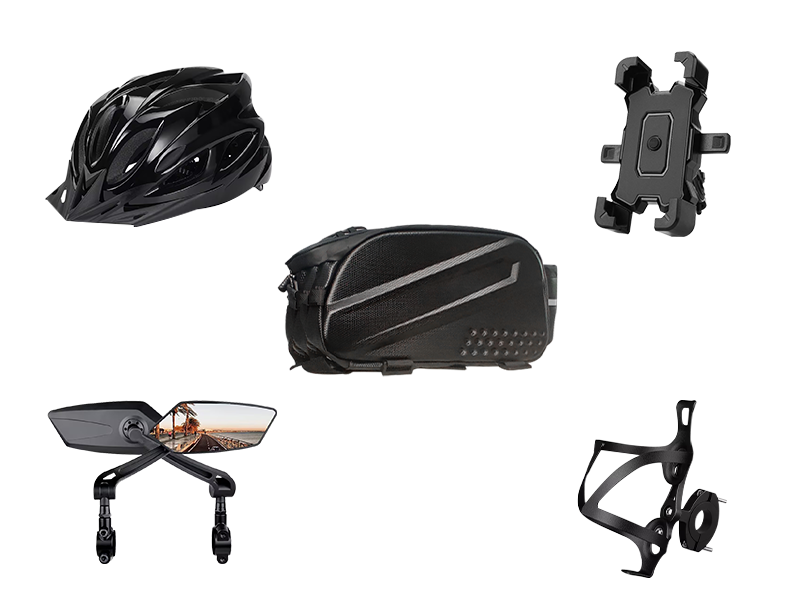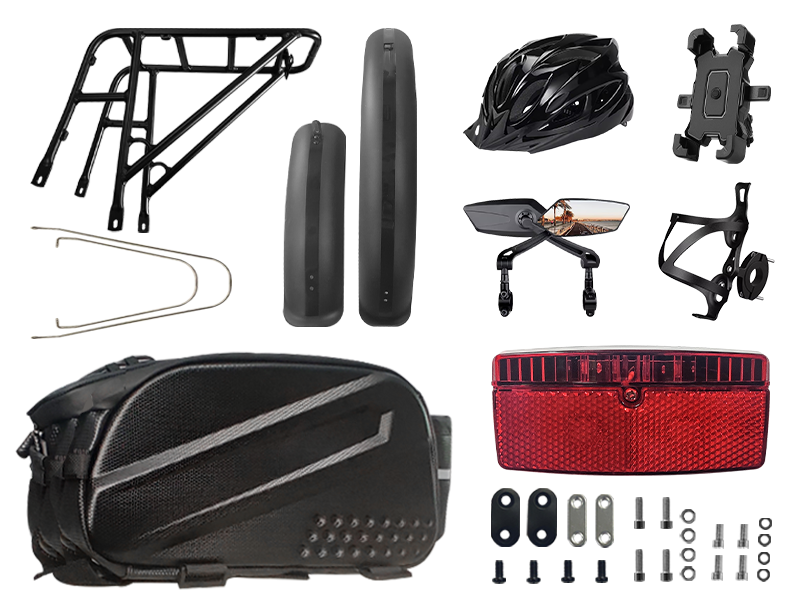E-Mountain Bike vs Regular Mountain Bike: A Comparative Analysis
APR 11, 2024
The world of mountain biking has undergone significant changes in recent years, with the emergence of electric mountain bikes (E-MTBs) as a popular alternative to traditional, regular mountain bikes. The debate surrounding the pros and cons of these two types of bikes has gained momentum, as riders seek to understand the differences and decide which one suits their needs better. In this article, we delve into the comparison between E-MTBs and regular mountain bikes, exploring their unique features, performance, and suitability for different riding scenarios.
Performance Capabilities
The most notable difference between E-MTBs and regular mountain bikes lies in their performance capabilities. E-MTBs are equipped with a motor and battery system that provides an additional boost of power, enhancing the rider's climbing abilities and overall speed. This added assistance makes E-MTBs particularly suitable for riders who encounter steep inclines or who seek to traverse long distances with less effort.
On the other hand, regular mountain bikes rely solely on the rider's physical strength and technique to traverse difficult terrain. They offer a more traditional riding experience, requiring riders to put in more effort, especially when climbing steep hills. However, this hands-on approach also allows riders to develop a deeper connection with their bikes and to fully immerse themselves in the challenges of mountain biking.
Range and Battery Life
The range and battery life of E-MTBs are crucial considerations for riders. The range refers to the distance an E-MTB can travel on a single battery charge, while battery life refers to the duration of the battery's useful life. E-MTBs typically offer a range of several tens of kilometers, depending on the motor's power, the terrain, and the riding style. Riders need to plan their rides accordingly, ensuring they have enough battery power to complete the intended route.
Battery life, on the other hand, can vary depending on the quality of the battery and how it is maintained. Riders need to be mindful of charging the battery regularly and replacing it when necessary to ensure optimal performance.
Regular mountain bikes, of course, have no such concerns about range or battery life. Riders can simply pedal as long as they have the physical energy to do so, without worrying about running out of power.
Cost and Maintenance
The cost of E-MTBs is generally higher than that of regular mountain bikes, primarily due to the additional components and technology involved. Riders need to factor in the initial purchase price, as well as the potential cost of replacing batteries and other components over time.
Maintenance requirements for E-MTBs are also slightly more complex. Riders need to keep the motor and battery system in good condition, ensuring they are properly maintained and free from damage. Regular checks and replacements of parts may be necessary to ensure optimal performance.
Regular mountain bikes, on the other hand, tend to be more affordable and require less maintenance. Riders can focus on basic maintenance tasks like lubricating chains, adjusting brakes, and checking tire pressure, without having to worry about complex electrical systems.
Suitability for Different Riders and Riding Styles
The suitability of E-MTBs and regular mountain bikes depends greatly on the rider's preferences and riding style. E-MTBs are ideal for riders who value convenience and efficiency, especially those who may not have the physical strength or endurance to tackle difficult terrain on a regular bike. They are also suitable for riders who seek to enjoy the scenery and the outdoors without putting in too much effort.
Regular mountain bikes, on the other hand, are preferred by riders who enjoy the challenge and the sense of accomplishment that comes from relying solely on their own strength and technique. They offer a more authentic and traditional mountain biking experience, appealing to riders who seek a deeper connection with their sport.
Environmental Impact
The environmental impact of E-MTBs and regular mountain bikes is another important consideration. E-MTBs, with their motors and batteries, may have a higher environmental footprint than regular bikes, especially when it comes to battery disposal and recycling. However, the development of more efficient and environmentally friendly battery technology is ongoing, and future models may offer improved sustainability.
Regular mountain bikes, on the other hand, have a relatively low environmental impact. They require no electricity or fossil fuels to operate, making them a more environmentally friendly choice. Riders can further reduce their impact by choosing sustainable materials and practices for their bikes and riding gear.
Conclusion
In conclusion, the choice between E-MTBs and regular mountain bikes depends on the rider's specific needs, preferences, and riding style. E-MTBs offer added convenience, efficiency, and climbing ability, making them suitable for riders who value these aspects. Regular mountain bikes, on the other hand, provide a more traditional and challenging riding experience, appealing to riders who seek a deeper connection with them.












